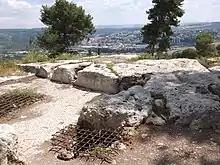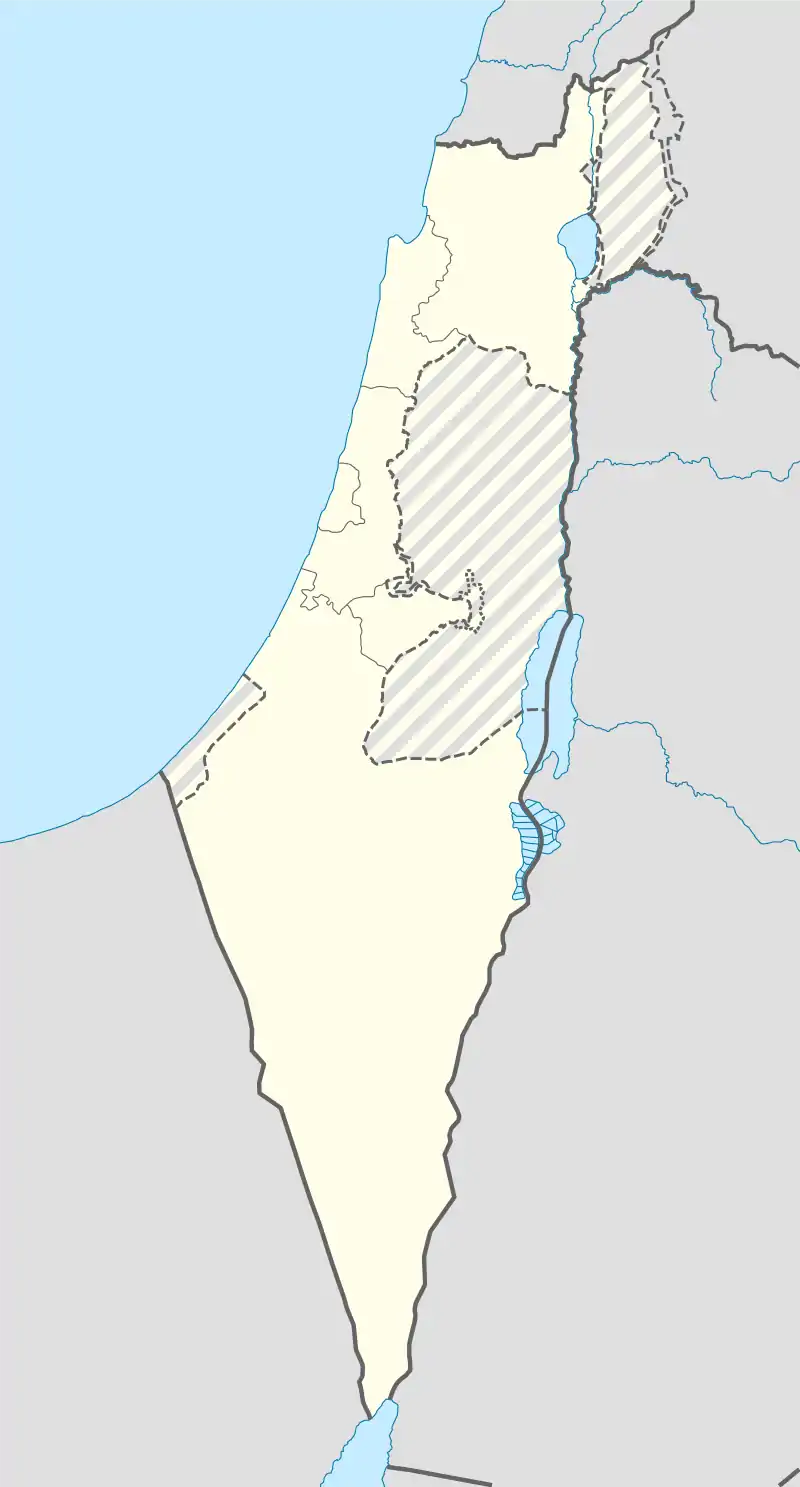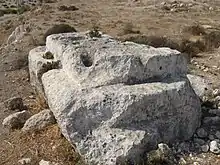Zorah
Zorah (Hebrew: צרעה) or Tzorah (pronounced [tsoʁˈ(ʔ)a]), perhaps "place of wasps," was a biblical town in the lower hill country of Judah. The site lies at an elevation of about 1,150 feet (350 m) above sea-level.[1]
צרעה | |
 Mosaic floor at Zorah | |
 Shown within Israel | |
| Alternative name | Sarea |
|---|---|
| Location | |
| Region | Shephelah |
| Coordinates | 31.775086°N 34.98535°E |
| History | |
| Periods | Late Bronze age |
| Cultures | Canaanite, Israelite |
| Site notes | |
| Condition | Ruin |
Location
Zorah was situated on the crest of a hill overlooking the valley of Sorek, and was fortified by Rehoboam (2 Chronicles 11:10). It has been identified with Sar'a, 23 kilometers west of Jerusalem near Nahal Sorek, now often referred to as Tel Tzora.
History
Zorah was mentioned together with Ajalon in the Amarna letters as a city attacked by the Apiru. Zorah has been identified with the biblical Zoreah (Joshua 15:33), and is the birthplace of Samson.[2] Judges 13:2 states:
- "there was a certain man from Zorah, of the family of the Danites, whose name was Manoah".
Samson's grave is recorded as being near there (Judges 16:31), and which the historian Josephus says was in a village called Sarasat.[3]
In Joshua 19:41, Zorah is mentioned in the allotment of the Tribe of Judah, on the border with the Tribe of Dan. It was most likely the Danites who occupied Zorah.

Zorah is also the name of an Egyptian sun god which is in line with other sun-worshiping villages in the area, Eshtaol (valley of fire) and Beit Shemesh (house of sun).
The Palestinian village Sar'a was located in the presumed location of the ancient town. It was depopulated during the 1948 Arab–Israeli War. Conder and Kitchener, describing the site in 1881, said that, with the exception of the olive groves to the north of the village, the low hill on which the village lies is "bare and white," a place now planted with a pine forest by the Jewish National Fund.[4]
Kibbutz Tzora is now located nearby, at the foot of Zorah mountain, on its southern side.
References
- The Palestine Exploration Fund Quarterly Statement, London 1871, p. 93
- Judges 13:2
- Josephus, Antiquities (v.ix.§ 12)
- Conder and Kitchener, Survey of Western Palestine (vol. III), London 1883, p. 26
| Wikimedia Commons has media related to Zorah (Archaeological Site). |
External links
- Surah (Zorah) in Survey of Western Palestine, Map 17: IAA, Wikimedia commons
![]() This article incorporates text from a publication now in the public domain: Easton, Matthew George (1897). Easton's Bible Dictionary (New and revised ed.). T. Nelson and Sons. Missing or empty
This article incorporates text from a publication now in the public domain: Easton, Matthew George (1897). Easton's Bible Dictionary (New and revised ed.). T. Nelson and Sons. Missing or empty |title= (help)